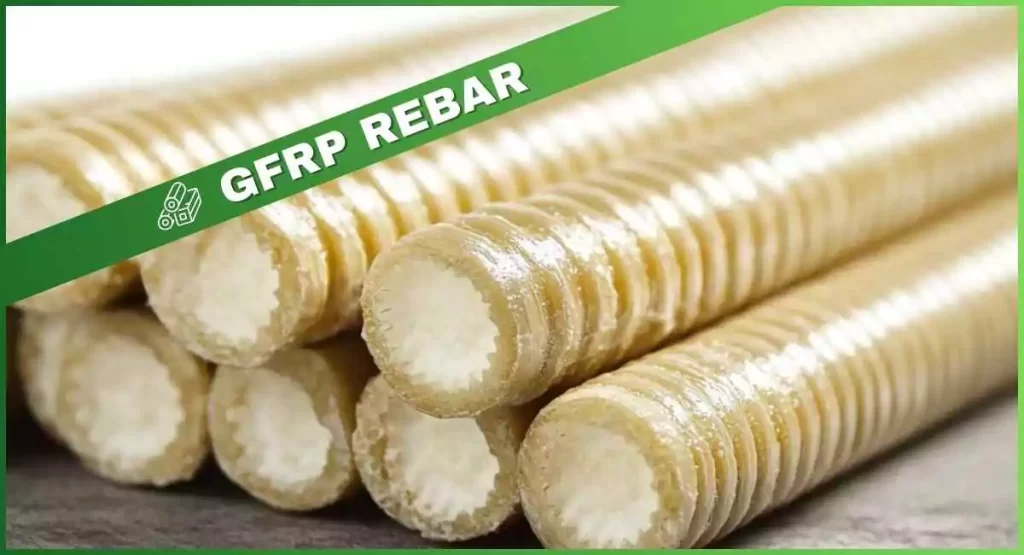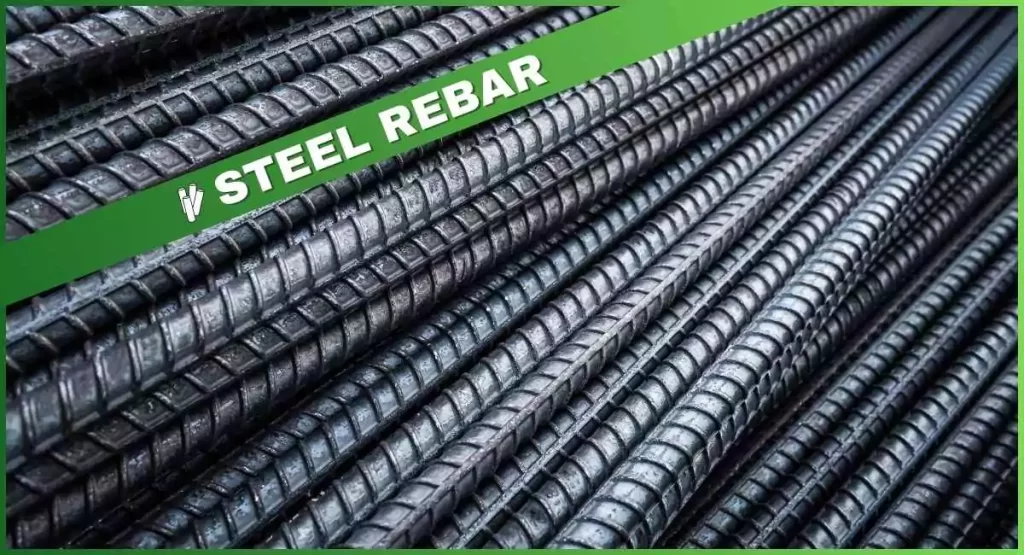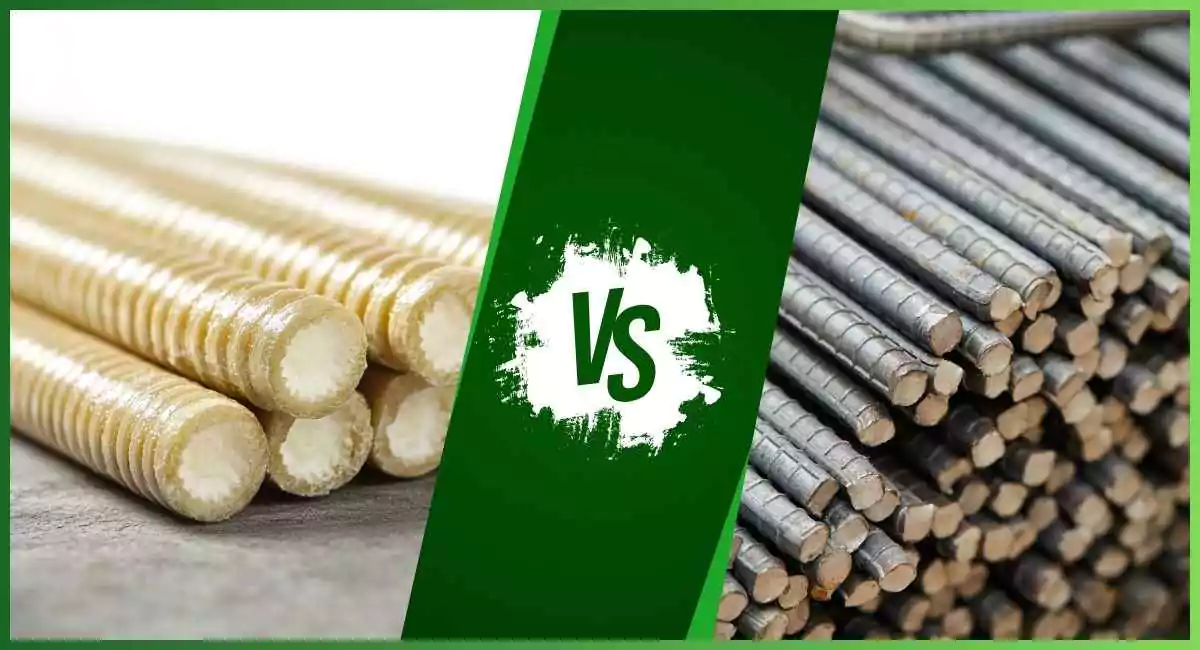In the construction industry, choosing the right materials can significantly impact a project’s durability, cost, and longevity. Rebars are crucial components in reinforced concrete structures, providing the necessary tensile strength to support the concrete under tension. With global construction output forecasted to grow by 85% to $15.5 trillion worldwide by 2030, the choice between GFRP (Glass Fiber Reinforced Polymer) rebar and steel rebar becomes even more critical.
GFRP (Glass Fiber Reinforced Polymer) rebar and steel rebar, it is still widely discussed about which one is better than the other. With these pros and cons that these two own, here we will discuss the comparison between GFRP rebar vs steel rebar. It will help you choose the best material for your construction requirements.
What is GFRP Rebar?

GFRP rebar is a polymer matrix that has fibers. They can be glass, carbon, plastic, or aramid. This composite material is increasingly now being used in the construction industry because of its uniqueness. In comparison with conventional steel, this GFRP rebar is not corrosive. So, it is mainly suitable for environments where there would be an extensive corrosion problem, such as in marine structures, bridges, or chemical plants.
Advantages of GFRP Rebar
- Corrosion Resistance: GFRP rebar does not corrode. Hence, the likelihood of structural failure due to corrosion is nil. It can withstand constant water and chemical exposure. This attribute prolongs the life of the structure, which actually reduces maintenance costs.
- Lightweight: GFRP rebar is much lighter than that of the traditional steel; it can be transported and handled on site more easily. It is easy to cut & install-thus labor cost could be lower and time to install faster.
- High Strength-to-Weight Ratio: Though lightweight, the GFRP rebar offers excellent tensile strength that will make it a good substitute to the conventional steel reinforcement.
- Non-Conductive: GFRP rebar doesn’t attract magnets and is also non-conductive, which is pretty handy in sensitive applications, such as an MRI room.
Disadvantages of GFRP Rebar
- Cost: The other main disadvantage for GFRP rebar is that its initial cost is always higher than that of steel rebar. However, the saving for long-term maintenance and durability usually covers the difference.
- Lower Elastic Modulus: GFRP rebar has a lower modulus of elasticity than steel, meaning less stiff and more likely to deflect when loaded. This characteristic must be carefully considered in design to ensure performance.
When to Use GFRP Rebar?
GFRP rebar is ideal for projects where corrosion resistance is of utmost value. It is not corrosive and can resist chemical exposure, making it ideal for such applications in irrigation systems, greenhouses, and other farm buildings.
GFRP rebar is corrosion-resistant. GFRP rebar can sustain longer service lives with minimal maintenance in chemical plants and wastewater treatment facilities where it is exposed to harsh chemicals. For supporting greener and sustainable construction, GFRP rebar should be your choice.
| Feature | GFRP Rebar | Steel Rebar |
| Material Composition | Polymer matrix reinforced with fibers (glass, carbon, plastic, aramid) | Carbon steel |
| Corrosion Resistance | Highly resistant to corrosion | Susceptible to corrosion |
| Weight | Lightweight (up to 75% lighter than steel) | Heavy |
| Tensile Strength | High strength-to-weight ratio | High tensile strength |
| Elastic Modulus | Lower modulus of elasticity (less stiff) | High modulus of elasticity (stiffer) |
| Conductivity | Non-conductive, non-magnetic | Conductive, magnetic |
| Cost | Higher initial cost, lower maintenance costs | Lower initial cost, higher maintenance costs |
| Installation | Easier to handle and transport | More labor-intensive to handle and transport |
| Ductility | Lower ductility (less deformation before failure) | High ductility (significant deformation before failure) |
| Thermal Expansion | Different coefficient of thermal expansion from concrete | Similar coefficient of thermal expansion to concrete |
| Longevity | Longer lifespan in corrosive environments | Shorter lifespan in corrosive environments |
| Environmental Impact | No rust, low environmental impact from corrosion | Rust and corrosion can have environmental impacts |
| Applications | Infrastructure, residential, parking lot, marine applications, agriculture, MRI rooms, etc. | Suitable for residential, commercial, infrastructure, heavy-load applications |
| Maintenance | Lower maintenance requirements due to corrosion resistance | Higher maintenance requirements due to corrosion potential |
| Design Considerations | Requires careful design due to lower stiffness | Standard design practices well-established |
What is Steel Rebar?

Steel rebar, otherwise referred to as reinforcing steel, has been at the forefront of construction for decades. Its capability and variety make it very flexible in terms of use, such that it is perfect in many applications for construction. Versatility in both design and application makes its main grades and sizes broadly applicable.
Advantages of Steel Rebar
- High Tensile Strength: High tensile strength is another property of steel rebar. This signifies that the rebar could be able to withstand stress significantly, thus proving apt for high-load applications.
- Adaptability: Steel rebar can be extensively deformed before fracture. Thus, it offers a warning sign before failure becomes catastrophic. This is the most important property as structures in seismic regions require this characteristic.
- Cost-Effective: Steel rebar is generally less expensive than GFRP rebar, particularly for those projects sensitive to costs. Large quantities availability and established process contribute to its cost feasibility.
- Compatibility with Concrete: Rebar made of steel has thermal expansion coefficient approximating that of concrete, which leads to extremely few opportunities for cracking due to temperature fluctuations.
Disadvantages of Steel Rebar
- Corrosion: Steel rebar has as its major drawback that it corrodes, especially in wet and chemical-intensive settings. Structures with steel rebar will begin corroding and deteriorating after 10 years.
- Weight: Steel rebar is heavy, making transport and installation processes requiring more labor and being costlier. This is primarily applicable when huge supplies of rebar are required for extensive projects.
When to Use Steel Rebar?
Iron rebar is still the preferred material for most traditional construction work, whether it is a residential building, commercial structure, or infrastructures such as roads and bridges. It is cost-effective, has high tensile strength, and it is ductile; hence, very suitable for applications where budget limitation and mechanical performance are concerns.

